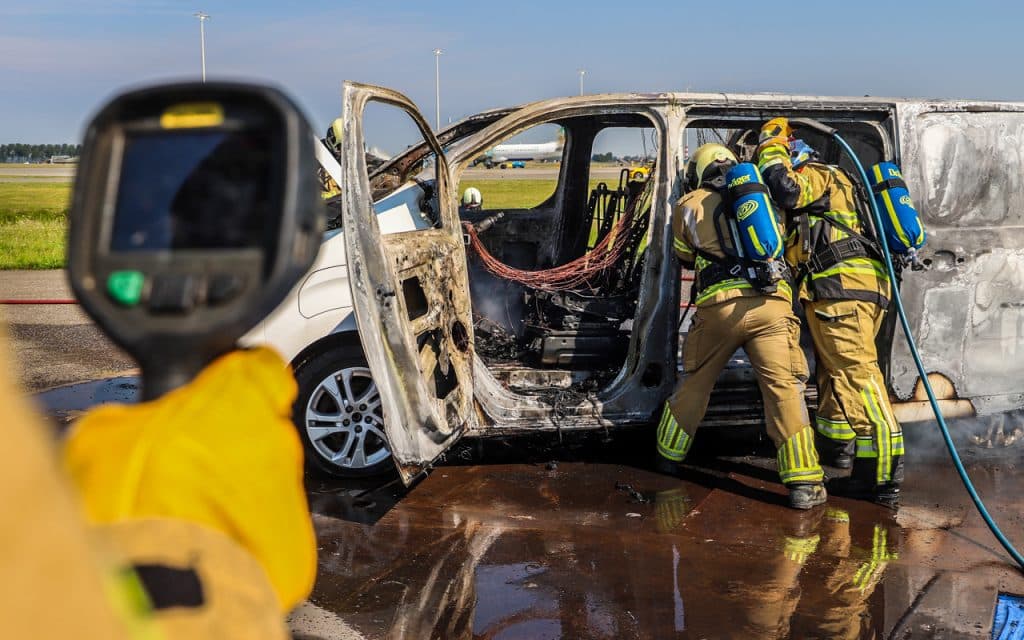Ultra high pressure extinguishing system suitable, under conditions, to extinguish battery fires of electric vehicles
26 November 2024
An ultra high pressure (UHP) extinguishing system can safely and effectively extinguish an unstable or burning battery pack of an electric vehicle. This provided a number of safety measures are taken. This follows from a fire experiment with 2 electric cars and additional research by the NIPV.

This makes an UHP-extinguishing system an important additional option in the fire department’s toolbox when extinguishing electric vehicle fires involving the battery. It is therefore and additional intervention option in addition to a water-filled submersion container or letting the vehicle burn out.
With UHP-extinguishing technology, battery cells can be cooled directly
An UHP-extinguishing system uses ultrahigh pressure water jet technology. This makes it possible to create an opening in the battery pack to introduce water directly into the battery pack. The thermal runaway in the battery can thus be stabilized on site.
Four safety measures
The following measures are conditional for safe deployment of the UHP-extinguishing system:
- Use low-pressure jets to suppress flares from the battery and protect the UHP operator.
- Ventilate any accumulated flammable gases in the vehicle by braking it windows with the UHP-extinguishing system from a distance or using fans, for example.
- Position firefighters away from (toxic) smoke. Use low-pressure jets to shield them from any flames if necessary.
- Use the long lance or extension of the UHP-extinguishing system.
Clear deployment procedure provides guidance for use of UHP extinguishing system
The UHP-extinguishing system operational guidelines consists of locating hot spots with a thermal imaging camera, penetrating the battery pack at these locations and introducing water via the UHP-extinguishing system. Steam formation serves as an indicator that there is cooling of the batteries. The leakage of water out of the battery pack, combined with the cessation of steam formation, indicates that the thermal runaway has stopped. A period of visual monitoring, supported by checks with a thermal imaging camera, is necessary to see if the deployment is effective. Firefighters who participated in the fire experiment are positive about deployment with an UHP-extinguishing system: they indicate that the method is relatively easy to implement.
In conclusion, the results of the fire experiments provide the NIPV with sufficient confidence to recommend the deployment of the UHP-extinguishing system by trained UHP-units within the Dutch fire department.
Collaboration with many parties
The fire experiment was made possible by cooperating with Fire Brigade Netherlands, Fire Brigade Schiphol, Joint Fire Brigade Rotterdam, Company Fire Brigade Tata Steel, Safety Region Utrecht and Safety Region Haaglanden. In addition, the German working group VDA/VDIK ‘Rescueing of people’, Cobra Coldcut Systems and the supplier of the cars are contributing to the research.
Read the research report
The findings of the fire experiment are documented in a research report and have been translated into concrete action guidelines for firefighters who want to use this system.
